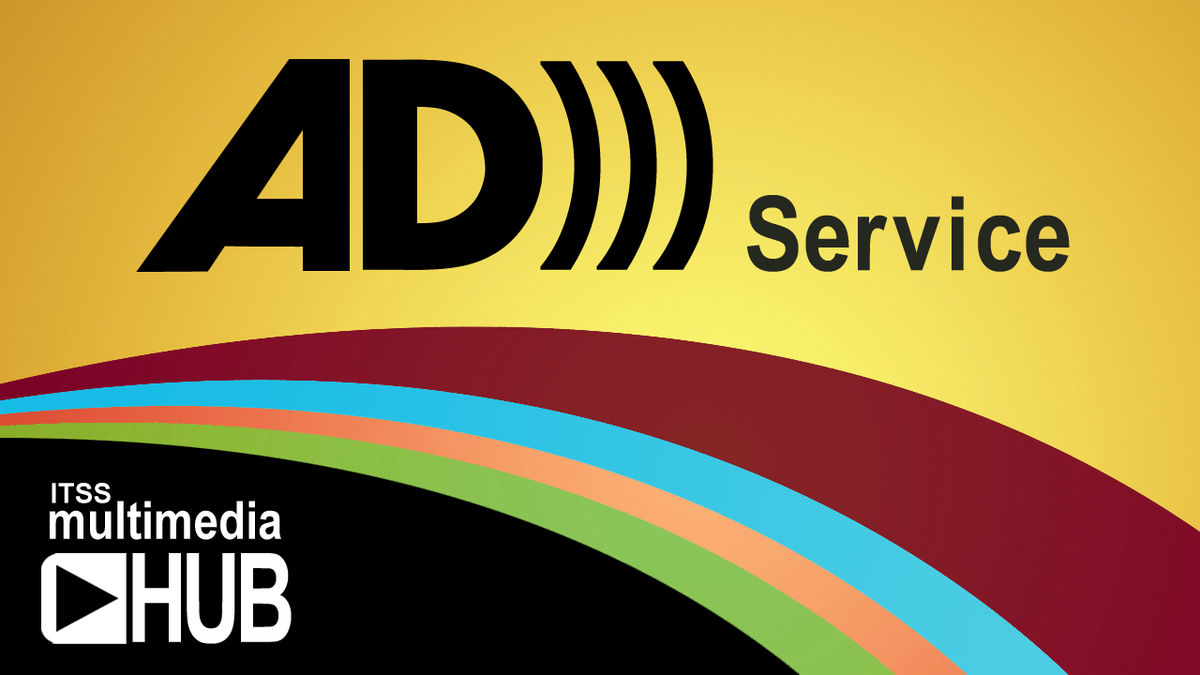What is Audio Description?
Audio Description (AD) provides descriptive narration of key visual elements that make visual media inclusive. It takes a video and talks you through it by describing elements such as actions, gestures, scene changes, images of text important to understanding, and any other significant visual information. It makes video and multimedia accessible by capturing what is happening on screen into audible descriptions that are incorporated during natural pauses in the sound track. It provides a mental picture of what is happening.
Why Describe Video?
- People with Visual Disabilities
- A 2015 National Health Interview Survey found that 23.7 million Americans (10%) have trouble seeing.
- People with Autism
- Individuals on the autistic spectrum find that audio description helps better understand emotional and social cues only demonstrated through actions or facial expressions.
- Auditory Learners
- Research into how the brain processes information reveals that there are two channels: auditory and visual. 20-30% of students say they retain information best through sound.
- Language Development
- Listening is a key step in learning language and associating it with appropriate actions and behaviors.
- Inattentional Blindness
- This is a phenomena where a person fails to recognize visual information in plain sight. We often have instances where we missed a key visual element in a video or image until it was pointed out to us. Audio description can help point those key visuals out to all viewers.
- Flexibility
- People can view videos in eyes-free environments (cooking, driving, etc.)
- Policy and Standard
- Per WCAG 2.0 AA, the University of Minnesota Standard, Audio Description is required when essential information is visually shown on screen that cannot be understood from soundtrack alone.
As the W3C Media Accessibility User Requirements state,
Described video provides benefits that reach beyond blind or visually impaired viewers; e.g., students grappling with difficult materials or concepts. Descriptions can be used to give supplemental information about what is on screen-the structure of lengthy mathematical equations or the intricacies of a painting, for example.
When is it Needed?
If you can follow what's going on in a video by listening only and without looking at the screen, then audio description is not required. If there are things in the visual portion of the video that the audio does not adequately describe for someone who is not seeing the screen, then audio description is required. So if you already explain essential information verbally in a video the amount of additional audio description can be reduced or even eliminated.
How Does the Service Work?
You either directly establish an account with the vendor, 3Play Media, or you work with the ITSS Multimedia Hub and we will use our account with the vendor, and charge back to your department. You provide digital video files to the vendor (either directly or through ITSS) and transcripts if available. The vendor sends back described video.
Costs
Costs for this service are very inexpensive compared to other vendors. It is $2.50/minute for captioning and $9.50/minute for audio description which equals $12.00/minute versus $20+/minute by other vendors. Closed captioning is required in order for the vendor to prepare the file and note where the pauses will be to add the audio description.
If Disability Resources is aware that you have a student in your class who needs Audio Description, you will be alerted and an ITSS staff member will follow up with you to determine your needs and work with you. Funding will be provided to cover the cost of Audio Descriptions in these situations. If you become aware of a student in your course who needs Audio Description as an accommodation, please contact Mary Olson-Reed in ITSS immediately.
Audio Description in Action
The following is an example of Audio Description. If you are sighted, close your eyes to get the proper understanding of Audio Descriptions.
For comparison the same video without Audio Description is available.
More Examples
- Self-Driving Car Test: Steve Mahan (Audio Described) - YouTube
- The Hunger Games with audio description YouTube
- Frozen - Trailer with Audio Description - YouTube
- Nosferatu with Audio Description - YouTube
- The Described and Captioned Media Program YouTube Channel
- Audiodescribe - audiodescribe.com
